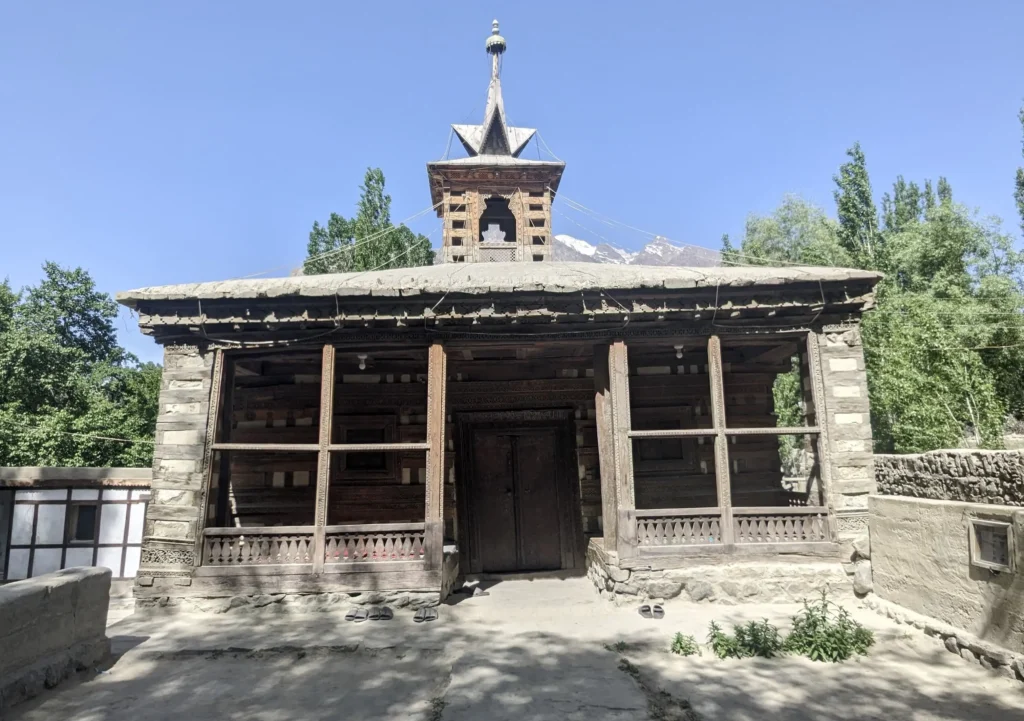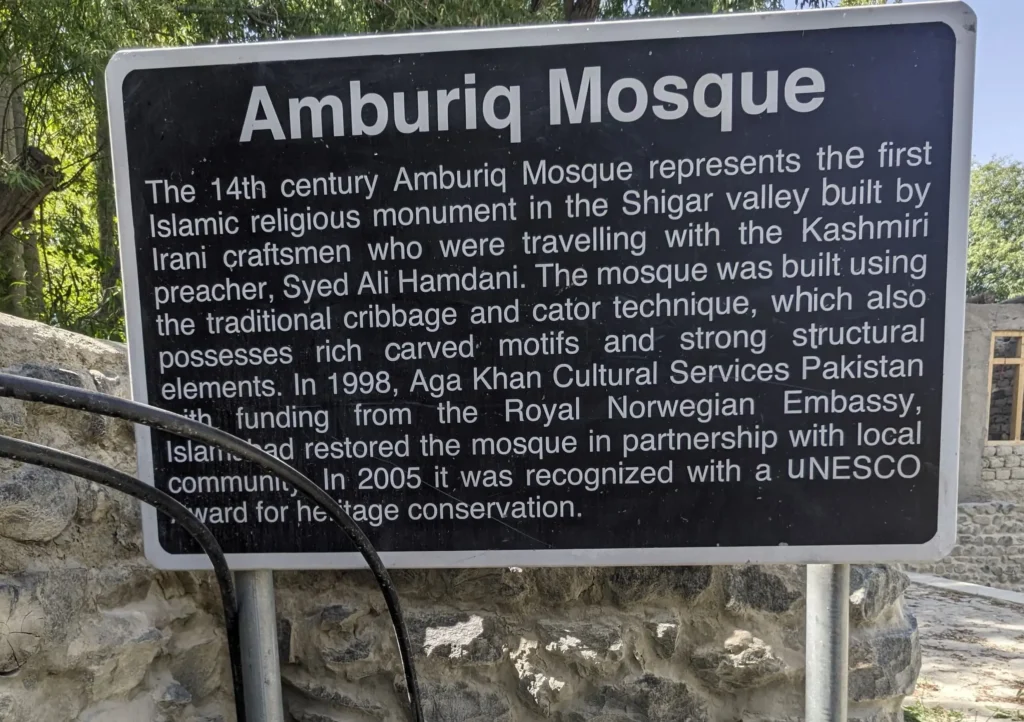
Have you ever encountered a mosque that feels more like a wooden sanctuary fused with Buddhist pagodas? Welcome to Amburiq Mosque—an architectural wonder of northern Pakistan that speaks volumes.
What You’ll Learn
Why Amburiq Mosque is an Iconic Heritage Treasure
How to visit: location, timing, and visitor tips
Architectural highlights: materials, styles, and symbolism
Restoration story & UNESCO recognition
A cautionary note on preserving historical integrity
Discovering Amburiq Mosque in Shigar Valley

Nestled in Shigar, Gilgit‑Baltistan, Amburiq Mosque (also spelled Amburik) is often hailed as the first Islamic religious structure in the valley, built by Sayed Ali Hamdani alongside Iranian craftsmen in the 14th century. Its compact footprint—just 63 m²—houses a prayer hall and verandah topped by a distinctive central “lantern” tower reminiscent of Tibetan pagodas.
🕌 Why It Matters for Visitors & Researchers
Cultural crossroads: Blends Tibetan, Kashmiri, Persian, Buddhist, and Islamic influences
Historic Significance: First mosque in Shigar Valley—built to introduce Islam locally
Living heritage: Still active for prayers, with a mini museum inside
UNESCO-awarded restoration: A 1998–2000 project that won the 2005 Asia‑Pacific Heritage Award for Cultural Conservation
How to Visit Amburiq Mosque
Location & Timing
📍 35°24′49″ N, 75°44′17″ E in Shigar town, ~35 km east of Skardu
Best visited between May and September, during Akhurjushor, the tourist season
Access & Entry
Located alongside Shigar Fort—often part of combined heritage tours
Visitors typically make a small donation and can explore the museum
Nearby Attractions
Combine your visit with Shigar Fort, Khilingrong Mosque, Khanqah‑e‑Muallah, nearby Buddhist carvings & hot springs
Architectural Insights & Visitor Tips
Materials: Locally sourced wood and stone, using “cribbage and cator” timber‑stone technique
Artistry: Intricate wood carvings with floral/geometric motifs and roof beams echoing Tibetan/Kashmiri style
Central tower: A Buddhist-influenced lantern-style spire rising above the two-tiered roof
🧭 Tip: Bring autofocus or a wide-angle lens—these details shine through in the carvings and overall silhouette.
Restoration & Conservation Legacy
Pre-restoration issues: Leaning walls, eroded structure, damaged central tower
Restoration process: Led by Aga Khan Cultural Services with Norwegian Embassy funding (~US$18,300); locals trained in heritage crafts
Outcome: Mosque stabilized, tower rebuilt, ablution area added, original fabrics preserved, and a small museum launched
Recognition: Secured UNESCO‘s Asia-Pacific Award of Merit in 2005
A Challenge to Preserve Authenticity
Warning: Tourist foot traffic and insufficient signage can threaten the fragile wood and carvings. Encourage site managers to control access, use protective measures, and showcase detailed interpretive panels to preserve this gem responsibly.
Quick Visitor Checklist
Best season: June–September
Entry fee: Minimal donation expected
Combine with: Heritage circuit—Fort, Mosques, Khanqah, and nature trails
Photography: Allowed—respect prayer times
The guide recommended: Local heritage guide adds rich context
Final Thoughts & Next Steps
Amburiq Mosque isn’t just a structure—it’s a story carved in wood, stone, and cultural fusion. It connects you to Sufi legacies, Tibetan artistry, and the living spirit of Baltistan’s communities.
In Summary
Amburiq Mosque is a rare 14th-century wooden mosque combining Kashmiri, Tibetan, and Islamic designs, meticulously restored and still serving worshippers. Visiting offers cultural insight, heritage appreciation, and visual delight—all within a conscious effort to preserve a fragile treasure for future generations.
Ready to comment? We’d love to hear about your experience: Have you visited Amburiq Mosque or another restored heritage site in Northern Pakistan? Let us know below!
